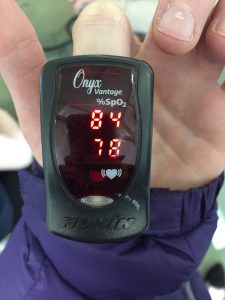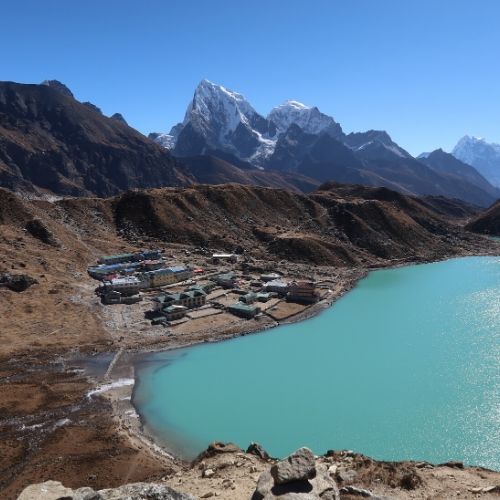Ascending to high altitude presents significant challenges to the human body. This post aims to explain why high altitude poses these challenges and how our body adapts to them.

‘Thinner Air’
The concentration of oxygen in the air anywhere on the planet remains constant at 21%. However, as altitude increases the barometric pressure falls, and with it the partial pressure of oxygen falls. In simple terms, there are fewer oxygen molecules available for us to use in each breath of air we inhale. Many people will start to feelthe effects of this reduced oxygen from altitudes of around 2500m because the oxygen saturation of our arterial blood begins to fall, as does the overall content of oxygen in the arterial blood. As we ascend higher, symptoms such as breathlessness and reduced exercise capacity will be experienced as our body has to operate with less oxygen and needs time to adjust.
The following table sets out the definitions of altitude ‘zones’ and the likely arterial saturations expected in these zones:
Zone | Height (m) | Arterial Saturation |
| Intermediate | 1500-2000 | >90% |
| High | 2500-3500 | >85-90% |
| Very High | 3500-5800 | >80% |
| Extreme | >5800 | >75% |
| ‘Death Zone’ | >8000 | Around 55% |
Acclimatization
The human body is incredible at adapting to challenge. Faced with less available oxygen, two physiological processes occur aiming to increase the amount of oxygen we can carry and transport to the tissues that need it (our organs and muscles etc.). We call this process acclimatization and it starts at around 2500m:
- Over the first few hours of being at high altitude, the depth and frequency of our breathing increases. This increases our arterial oxygen saturation.
- Within a few days of being at high altitude, our body moves fluid (water) from our blood circulation into our tissues (people often complain of having swollen hands or face for this reason). This redistribution of fluid away from the blood increases the concentration of haemaglobin in our blood (the protein in our red blood cells that carries oxygen). Over longer time scales at altitude, our bone marrow increases its production of red blood cells to further increase our oxygen carrying capacity.
Despite these adaptations, our body won’t be able to fully compensate for the reduced oxygen availability at very high altitudes so our arterial oxygen saturation will be lower than it is at sea level. Given enough time, most people can adapt to altitudes around 5000m but few people adjust well to altitudes of higher than 5500m.
People acclimatize at different rates, but generally speaking it takes several weeks to fully acclimatize. Most altitude related illnesses are experienced when a person has ascended too fast to allow adequate acclimatization at altitudes over 3000m.

Recommended Ascent Rate
In 2010 the Wilderness Medicine Society (WMS) assembled an expert panel to develop evidence-based guidelines for the prevention and treatment of acute altitude illnesses. Most people can only tolerate total ascent rates of 400-600m per day. Therefore, the WMS advise “above an altitude of 3000m, individuals should not increase the sleeping elevation by more than 500m per day and should include a rest day (i.e. no ascent to higher sleeping elevation) every 3 to 4 days”. As an example of what is meant by increase in sleeping elevation, picture a route that ascends by 800m over the course of the day but then descends 300m to the next overnight camp; the increased sleeping elevation is 500m. This guidance is widely accepted and should be followed when planning trips to high altitude.
These guidelines are based on how ‘most people’ tolerate altitude ascent so it is important to note that there are some people who need to ascend even slower than 400m per day. It is always worth planning some spare days into an itinerary so you can be flexible and slow your ascent down if you need to or you can have another rest day to help acclimatise whilst enjoying the views.
Coming soon…the next blog post will provide information about how you can prepare for adventures to high altitude.

Pingback: Sleep At High Altitude - Dr. Hannah Lock
Very clear. The arterial saturation chart is very useful!